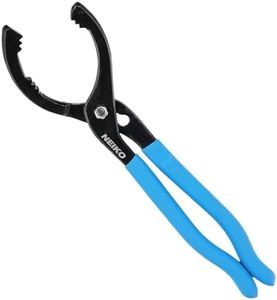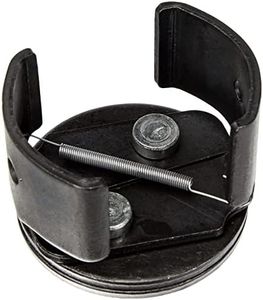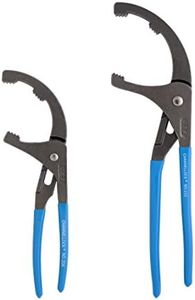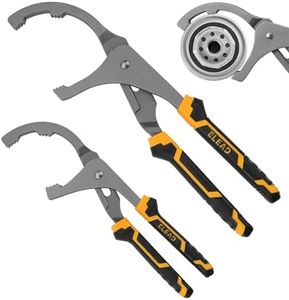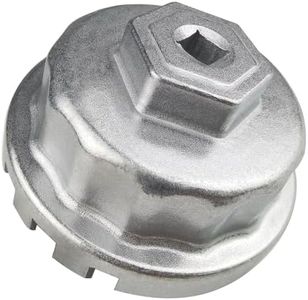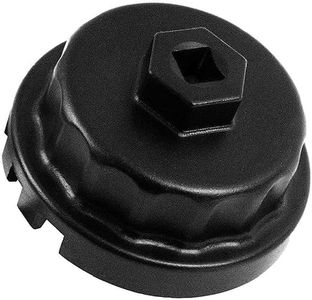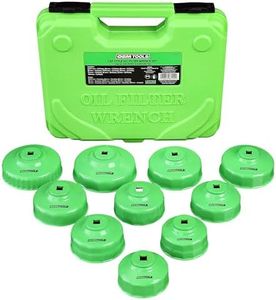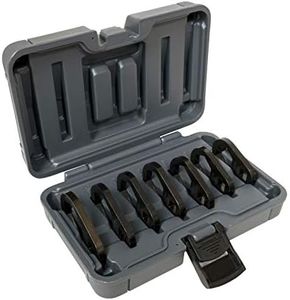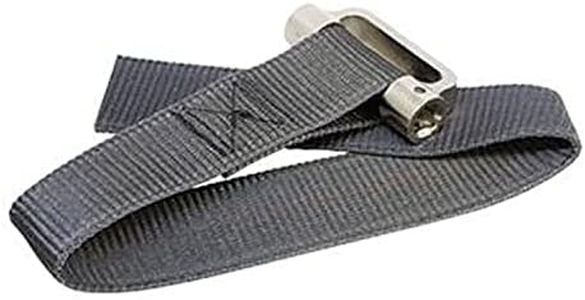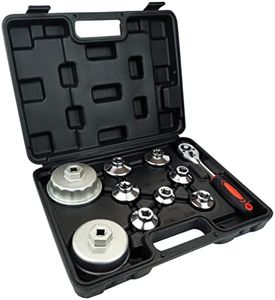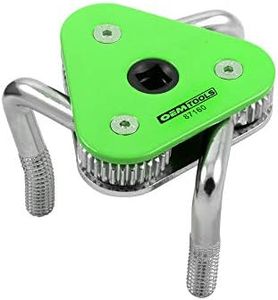We Use CookiesWe use cookies to enhance the security, performance,
functionality and for analytical and promotional activities. By continuing to browse this site you
are agreeing to our privacy policy
10 Best Oil Filter Wrenches
From leading brands and best sellers available on the web.Buying Guide for the Best Oil Filter Wrenches
Choosing the right oil filter wrench makes the job of changing your vehicle’s oil filter much easier, safer, and more efficient. Instead of struggling with stubborn filters, the right tool can give you a good grip and help prevent damage—both to the filter and to your hands. When selecting an oil filter wrench, it’s important to consider the type, size compatibility, handle design, and build quality so that you get a tool that fits your filter snugly and works well in the space available in your engine bay.Wrench TypeThe wrench type refers to the style or design of the oil filter wrench, such as strap, cap, claw, or pliers-style. This is important because different vehicles and filter positions may require different access or grip. For example, strap wrenches wrap around the filter and work well for larger or irregularly placed filters, while cap wrenches fit over the end of the filter for a secure grip. Claw wrenches automatically adjust to various sizes and are often easier to use in tight spaces. Choosing the right type depends on your engine bay's accessibility and the typical filters you work with, so if your filter is in a hard-to-reach spot, a claw or pliers-type might be best, while cap types work well if space allows and you know your filter’s exact size.
Size CompatibilitySize compatibility means how well the wrench fits oil filters of different diameters or shapes. This matters because a poor fit can strip or crush the filter, making removal difficult and potentially damaging your engine. Some wrenches are adjustable to fit a range of filter sizes, while others are fixed and designed for a specific filter type or measurement. To select properly, check the size or range your vehicle’s filter needs, or measure your current filter. If you work on multiple vehicles, an adjustable model may be most convenient; if you always work on the same car, a fixed size for that model will be simpler and more secure.
Handle Design and LengthThe handle design and length refer to how the tool is gripped and the leverage it provides. This is crucial for comfort, ease of use, and how much turning force you can apply. A longer handle gives more leverage—making it easier to turn stubborn filters—but can be harder to fit into tight spaces. Handles may also be coated for better grip, which improves safety and comfort. Choose a handle length and grip style based on how much room you have around your oil filter and how strong your grip is; in cramped engine bays, a shorter handle may be necessary, while more accessible filters can use a longer handle for added torque.
Build Quality and MaterialBuild quality and material speak to how sturdy and durable the wrench is, affecting how long the tool will last and how well it holds up under repeated use. Tools made from hardened steel or heavy-duty metal resist bending and breaking better than lightweight or plastic models. A well-built wrench is less likely to slip, strip, or break when dealing with stuck oil filters. If you need a tool for regular use or tough filters, look for strong metal construction; for occasional or light use, lighter materials may suffice but be mindful of durability.
Ease of Use and AdjustabilityEase of use and adjustability refers to how simple it is to operate and whether the wrench can be quickly adjusted to work with different filter sizes or positions. Tools with smooth adjustment mechanisms or simple locking features are easier and faster to use, especially if you need to change filters on multiple types of vehicles. For occasional users, a simple non-adjustable wrench matched to your filter is uncomplicated; for those working on many vehicles or in different conditions, an easily adjustable tool helps save time and avoids frustration.
